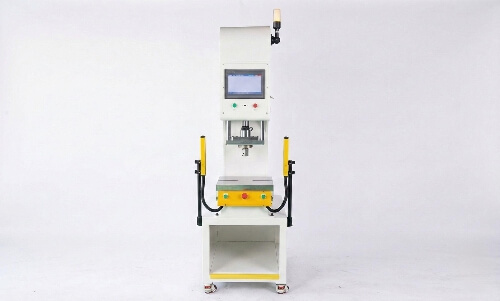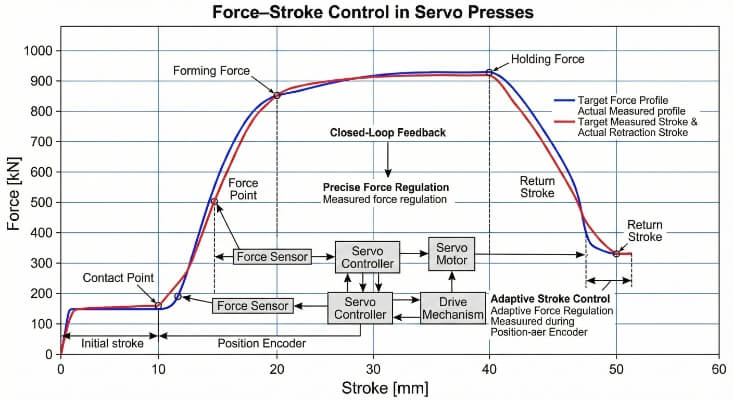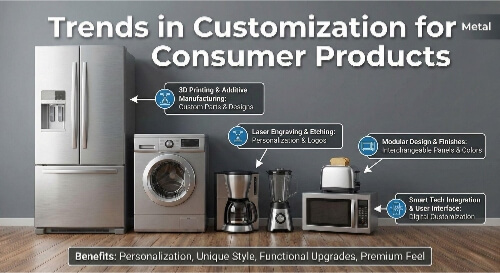يؤثر تشطيب السطح على كيفية ملاءمة الأجزاء معًا وتحركها ودوامها بمرور الوقت. يقلل السطح الأملس والدقيق من الاحتكاك ويعزز الكفاءة ويجعل المنتجات تدوم لفترة أطول. الشحذ والشحذ هما طريقتان للتشطيب تتجاوزان التشغيل الآلي الأساسي. كلاهما يحسنان الدقة، ولكنهما يستخدمان تقنيات مختلفة وينتجان نتائج مختلفة.
تستخدم عملية الشحذ أحجار كاشطة لإزالة كميات صغيرة من المواد وتحسين تشطيب السطح، بينما تعتمد عملية الشحذ على ملاط كاشط بين الأسطح للحصول على دقة عالية. الشحذ أفضل للأجزاء الأسطوانية ذات التفاوتات الضيقة. اللف هو الأفضل للأسطح المسطحة أو عند الحاجة إلى دقة متناهية. تقلل كلتا العمليتين من الاحتكاك وتحسن المتانة وتدعم الأجزاء عالية الأداء.
قد يبدو الشحذ واللف متشابهين في البداية. ومع ذلك، فإن أهدافهما ونتائجهما مختلفة. دعنا نلقي نظرة على كيفية عمل كل عملية ومتى يكون من الأفضل استخدامها.
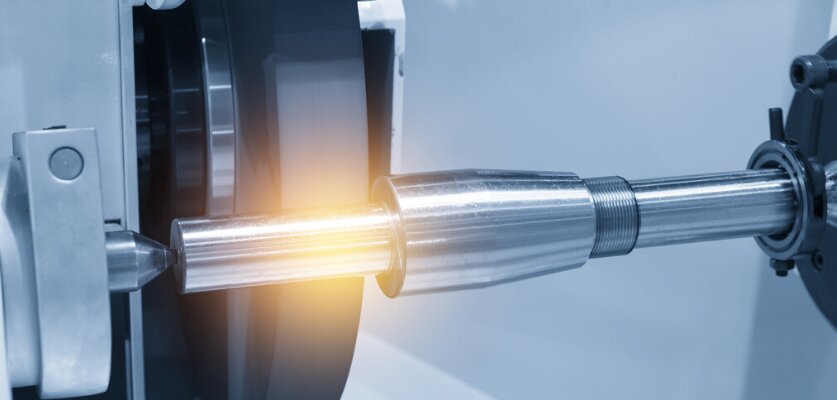
ما هو الشحذ وكيف يعمل?
الشحذ هو عملية تشطيب تستخدم أحجار كاشطة مثبتة على مغزل دوار. تضغط الأحجار على قطعة العمل بينما تدور الأداة وتتحرك ذهاباً وإياباً. يخلق هذا المزيج نمطًا متقاطعًا يساعد في التشحيم والتحكم في التآكل.
يختار المشغلون المواد الكاشطة بناءً على المادة والنتيجة المطلوبة. تشمل الخيارات الشائعة كربيد السيليكون وأكسيد الألومنيوم والماس. يؤثر حجم الحبيبات ونوع الرابطة على مدى سرعة إزالة المواد والتشطيب النهائي للسطح. تتحكم الماكينات في سرعة عمود الدوران وطول الشوط وضغط الحجر، بينما يعمل زيت الشحذ على تبريد منطقة العمل وإزالة البُرادة.
وغالبًا ما يستخدم الفنيون تمريرات متعددة، بدءًا من الأحجار الخشنة لتصحيح الشكل والانتهاء بأحجار أدق لتحسين جودة السطح. يعمل الشحذ على تحسين الاستدارة والأسطوانية والتحكم في الحجم، مما يحقق دقة على مستوى الميكرون. تتراوح التفاوتات النموذجية بين 1-5 ميكرومتر، و خشونة السطح يمكن أن يتراوح من Ra 0.05 ميكرومتر إلى Ra 0.4 ميكرومتر، اعتمادًا على الأحجار والإعدادات.
مزايا وقيود الشحذ
مزايا:
- يحسن الهندسة والاستدارة
- يصحح استدقاق التجويف والإزاحة
- ينتج نمط تزييت متقاطع متحكم به للتشحيم
- يزيل مواد أقل من الطحن الثقيل
- يوفر نتائج قابلة للتكرار للدفعات
- يعمل بشكل جيد على التجاويف والميزات الداخلية
محددات:
- يزيل المواد ببطء
- غير مناسب لإزالة المخزون الثقيل
- تقتصر بشكل أساسي على الأشكال الأسطوانية
- تتطلب الأسطح المستوية الكبيرة طرقاً أخرى
- يؤثر تآكل الأحجار على الاتساق ويحتاج إلى مراقبة
- تشطيبات المرايا أصعب في تحقيقها من اللف
- يتطلب الإعداد والتركيب عناية ومهارة في التركيب
- يمكن أن تؤدي الأدوات الكاشطة والماسية إلى زيادة التكاليف
التطبيقات الشائعة للشحذ
- مكونات المحرك: تم تحسين تجاويف الأسطوانة من حيث الهندسة وتقليل التآكل والاحتفاظ بالزيت.
- الأنظمة الهيدروليكية: الاسطوانات والصمامات ذات التفاوتات الضيقة والأسطح الملساء لمنع التسريبات.
- التروس: تنقية أسطح الأسنان للحصول على تشبيك دقيق، وتقليل الضوضاء، وعمر افتراضي أطول.
- الأدوات والمحامل: يضمن الاستدارة والاستقامة وجودة السطح.
- مكونات الفضاء الجوي: الأجزاء الأسطوانية الحرجة التي تتطلب الدقة والمتانة.
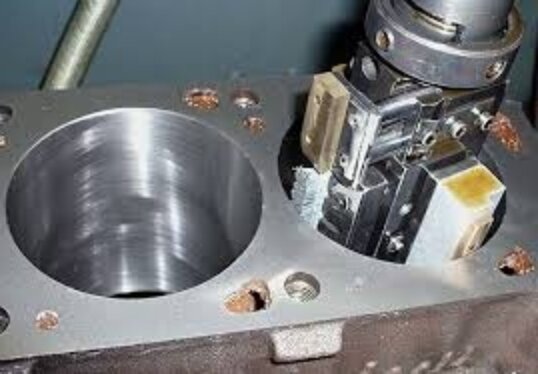
ما هو اللف وكيف يعمل?
يزيل اللف كميات صغيرة جدًا من المواد باستخدام خليط من الملاط الكاشطة وصفيحة لينة. يتم ضغط قطعة العمل على الصفيحة التي تتحرك بحركة محكومة. يقوم الملاط - المصنوع عادةً من جزيئات كاشطة ممزوجة بسائل - بإجراء عملية القطع. تشمل المواد الكاشطة الشائعة أكسيد الألومنيوم وكربيد السيليكون والماس.
تكون لوحة اللفة أكثر ليونة من قطعة العمل، مما يسمح لجزيئات الكشط بالاندماج في سطح اللوحة وقطع الجزء الأكثر صلابة. يمكن أن تكون الحركة دوارة أو متذبذبة أو مزيج من الاثنين معاً. يحدد الضغط والوقت مقدار المواد التي تتم إزالتها.
يعمل الصقل على تنعيم النقاط العالية على السطح، مما يحقق التسطيح في حدود ميكرون. كما أنه يقلل أيضًا من الخشونة إلى مستويات دقيقة للغاية، وغالبًا ما تكون في نطاق Ra 0.01-0.1 ميكرومتر. وعادةً ما يستخدم المهندسون عملية الصقل بعد الطحن أو الشحذ لتحسين الدقة. وهو مفيد بشكل خاص لإنتاج التشطيبات المرآة وتفاوتات التسطيح الضيقة للغاية.
مزايا وقيود اللف
مزايا:
- إنتاج أسطح مستوية للغاية بدقة عالية
- يحقق خشونة سطح منخفضة للغاية
- يعمل على العديد من المواد، بما في ذلك السبائك الصلبة والسيراميك والزجاج
- يحسّن الختم والملاءمة بين الأسطح
- يمكن معالجة أجزاء متعددة في وقت واحد
- يزيل التشوهات التي خلفتها طرق التشطيب الأخرى
محددات:
- يزيل المواد ببطء شديد، غير مناسب لإزالة المخزون الثقيل
- يتطلب رقابة صارمة على العملية للحصول على نتائج متسقة
- يمكن أن تكون التجهيزات والمواد الاستهلاكية باهظة الثمن
- ينتج عنه نفايات طينية يجب التعامل معها بشكل صحيح
- يعمل بشكل أفضل على الأجزاء المسطحة؛ أقل فعالية في الأجزاء الداخلية العميقة
- تعتمد الجودة بشكل كبير على مهارة المشغل
التطبيقات الشائعة لللف
- الصمامات والمضخات: يحقق تلامسًا مثاليًا للأسطح المانعة للتسرب لمنع التسرب.
- البصريات: العدسات الزجاجية والمرايا والأدوات الدقيقة التي تتطلب التسطيح والوضوح الشديدين.
- تصنيع أشباه الموصلات: رقائق ناعمة وموحدة للإلكترونيات الدقيقة.
- الفضاء والأجهزة الطبية: مقاعد الصمامات، والأدوات الجراحية، ومكونات التوربينات التي تحتاج إلى دقة عالية.
- أدوات القياس والمقاييس: الأجزاء التي تتطلب تفاوتات ضيقة للغاية وأسطحًا خالية من العيوب.
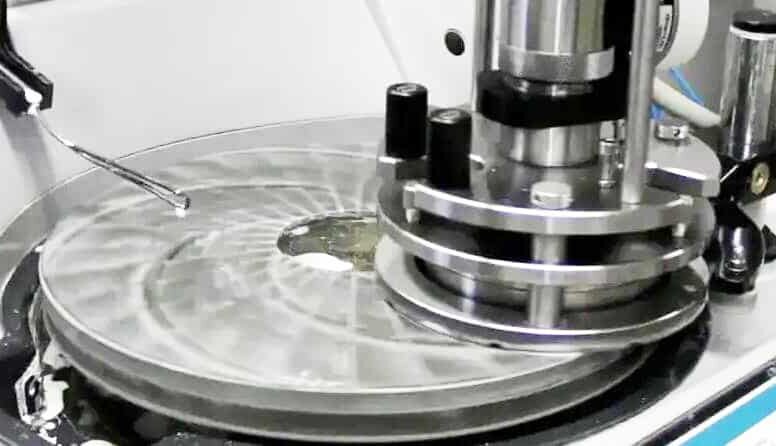
المقارنة بين الشحذ والشحذ
دعنا نقارن بين هاتين العمليتين في المجالات الرئيسية. سيساعدك ذلك على اتخاذ خيار عملي لمشروعك.
ميكانيكا العمليات
تستخدم عملية الشحذ أحجار كاشطة مثبتة على أداة تتمدد وتضغط على سطح القطعة. تدور الأداة وتتحرك ذهاباً وإياباً وتقطع بضغط متحكم به وتترك نمطاً من الفتحات المتقاطعة.
يعمل اللف بطريقة أخرى. فهو يستخدم ملاط من الجسيمات الكاشطة الموضوعة بين سطحين. يكون أحد السطحين، وهو صفيحة اللف، أكثر نعومة من قطعة العمل ويحمل المادة الكاشطة. وبينما يتحرك الجزء واللوح ببطء ضد بعضهما البعض، تزيل المواد الكاشطة كميات صغيرة جدًا من المواد.
الهندسة والتطبيق
السَنّ مصمم للأجزاء الأسطوانية. إنه يصحح حجم التجويف، والاستدارة والاستدقاق مع تحسين تشطيب السطح. ويدعم النمط المتقاطع الذي ينشئه التزييت، مما يجعله شائعًا في المحركات والتروس والمكونات الهيدروليكية.
يعد التسطيح أفضل للأسطح المسطحة أو التزاوج. فهو يوفر أقصى درجات التسطيح والتوازي، وهو ضروري لموانع التسرب أو الصمامات أو المكونات البصرية. لا يعيد تشكيل الجزء ولكنه يركز بدلاً من ذلك على تحقيق سطح خالٍ من العيوب.
تشطيب السطح ودقته
تنتج الشحذ عادةً تشطيبات سطحية في نطاق 16 إلى 4 ميكرو بوصة Ra. يقلل هذا المستوى من الصقل من الاحتكاك، ويحسن مقاومة التآكل، ويضمن أداءً موثوقًا للأجزاء الأسطوانية.
يحقق اللف نتائج أدق بكثير. يمكن أن تصل تشطيبات السطح إلى 1 ميكرو بوصة Ra أو أفضل، مع تسطيح وتفاوتات في حدود مليون جزء من المليون من البوصة. وهذا يجعل اللف هو الطريقة المفضلة للبصريات الدقيقة ومقاعد الصمامات وأسطح الختم حيث يكون الكمال أمرًا بالغ الأهمية.
السرعة والكفاءة
الشحذ أسرع وأكثر ملاءمة للإنتاج الصناعي. فهو يزيل المواد بثبات ويمكنه التعامل مع تصحيحات أكبر في الشكل والحجم. وهذا يجعلها خيارًا عمليًا للتصنيع بكميات كبيرة يتطلب الدقة والإنتاجية.
يعد اللف أبطأ لأنه يزيل كميات ضئيلة فقط من المواد. يتم استخدامه عند الحاجة إلى التسطيح الشديد أو جودة السطح. وعلى الرغم من عدم كفاءته في الإنتاج بكميات كبيرة، إلا أنه ضروري للتطبيقات التي تتطلب أعلى درجات الدقة.
التكلفة والمعدات
تتراوح آلات الشحذ من الأدوات اليدوية البسيطة إلى الأنظمة الآلية المتقدمة. تكاليف المعدات معتدلة، وأحجار الكشط غير مكلفة نسبيا. الشحذ هو حل فعال من حيث التكلفة للإنتاج على دفعات متوسطة إلى كبيرة.
معدات اللف أكثر تخصصًا وغالبًا ما تكون أكثر تكلفة. تتطلب العملية أيضًا مواد مستهلكة مثل الطين وألواح اللف، مما يزيد من تكاليف التشغيل. إنها عملية كثيفة العمالة، ولكن سعرها مبرر للمكونات عالية القيمة حيث لا يمكن المساس بجودة السطح.
الشحذ مقابل اللف: كيف تختار العملية الصحيحة؟
يرجع الاختيار بين الشحذ والشحذ إلى نوع الجزء، والتفاوت المطلوب، والهدف من تشطيب السطح. كلتا الطريقتين تعملان على تحسين الأسطح، ولكنهما تحلان مشاكل مختلفة.
الشحذ هو الخيار الأفضل عندما يكون الهدف هو تحسين هندسة التجويف، ودقة الحجم، وأداء التآكل. فهو يزيل الاستدقاق ويصحح الاستدارة الخارجة عن الاستدارة ويخلق نمطاً متقاطعاً يساعد في التشحيم. وهذا يجعل الشحذ مثاليًا للأجزاء الأسطوانية مثل أسطوانات المحرك والمكونات الهيدروليكية وموجهات الصمامات. كما أنها عملية للإنتاج المتوسط إلى العالي لأنها أسرع وأكثر فعالية من حيث التكلفة.
يكون اللف صحيحًا عندما يكون الهدف هو التسطيح الشديد أو التسطيح الدقيق. فهو ينتج أسطحًا تشبه المرآة ويحافظ على التسطيح في حدود ميكرون. وتستفيد الأجزاء المسطحة مثل موانع التسرب والمقاييس والمكونات البصرية والرقائق أكثر من غيرها من هذه العملية. وعلى الرغم من أن عملية الشحذ أبطأ وأكثر تكلفة من عملية الشحذ، إلا أنها توفر دقة لا مثيل لها وتشطيبات نهائية خالية من العيوب.
في العديد من الحالات، يستخدم المصنعون كلا الطريقتين. تقوم عملية الشحذ أولاً بتصحيح الهندسة والأبعاد، في حين أن الشحذ هو الخطوة الأخيرة لتحقيق أنعم تشطيب. يعتمد القرار على ما إذا كانت الحاجة الرئيسية هي تصحيح الهندسة أو التسطيح أو جودة السطح.
خاتمة
الصقل والشحذ هما طريقتان للتشطيب الدقيق، ولكنهما تستخدمان لأغراض مختلفة. الشحذ يعمل بشكل أفضل مع الأجزاء الأسطوانية. فهو يحسن من تشطيب السطح ويصحح الشكل، كما أنه فعال في أحجام الإنتاج المتوسطة إلى العالية. يعمل الصقل على إنشاء أسطح مسطحة فائقة النعومة مع تفاوتات ضيقة للغاية. وهو مثالي للأجزاء الحساسة، والمكونات البصرية، وأسطح الختم الحرجة.
إذا لم تكن متأكدًا من العملية التي تناسب قطعك أو تريد عرض أسعار للتشطيب الدقيق, تواصل مع فريقنا اليوم. يمكننا مساعدتك في اختيار الطريقة المناسبة وتقديم دعم الخبراء لمشروعك.
مهلا، أنا كيفن لي

على مدى السنوات العشر الماضية، كنت منغمسًا في أشكال مختلفة من تصنيع الصفائح المعدنية، وشاركت رؤى رائعة هنا من تجاربي عبر ورش العمل المتنوعة.
ابقى على تواصل

كيفن لي
لدي أكثر من عشر سنوات من الخبرة المهنية في تصنيع الصفائح المعدنية، وتخصصت في القطع بالليزر، والثني، واللحام، وتقنيات معالجة الأسطح. كمدير فني في شنغن، أنا ملتزم بحل تحديات التصنيع المعقدة ودفع الابتكار والجودة في كل مشروع.

